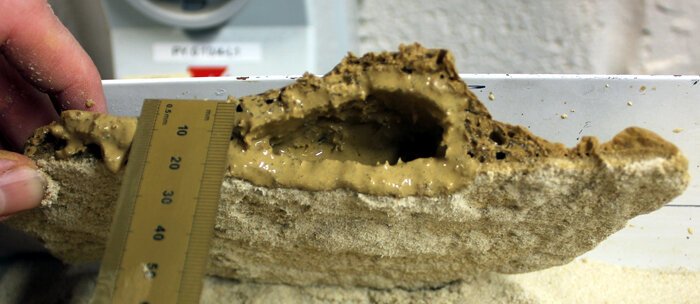The Martian landscape is dotted with features that resemble those on Earth, with evidence of ancient fluid flows. But were they caused by lava or mud? Now, European researchers have conducted experiments in chambers simulating Mars conditions and shown that mud volcanoes could be responsible for some formations.
While the Red Planet is pretty dry and volcanically quiet these days, that wasn’t always the case. Mars is home to some of the most impressive extinct volcanoes ever seen, including Olympus Mons, the largest in the solar system. Studies have even suggested that somewhere on the planet a volcano erupted for two billion years straight.
Water was also once plentiful. Evidence abounds of lakes, rivers and even oceans in Mars’ distant past, left behind in intriguing rock formations. But which were caused by lava and which were by flowing water and mud?
A new study has investigated, by trying to recreate these formations in the lab. The team used chambers that simulated conditions at the surface of Mars, including extremely cold temperatures of -20 °C (-4 °F) and low pressure. Mud was allowed to flow downhill under these conditions, and compared to how it acted under Earth-like conditions.
The team found that mud behaved very differently under Martian conditions. In the Earth-conditions chamber it looked very familiar, running downhill fairly uniformly, spreading out and getting thinner the further it traveled. But under Mars-like conditions, it tended to coagulate into smooth, round lumps. These shells would then break open and release more liquid mud, which would go on to refreeze further down. The end result is a series of undulating surfaces similar to what’s called “pahoehoe” lava on Earth.

Broz et al./Nature Geoscience
This phenomenon is called sedimentary volcanism – basically, mud volcanoes. These occur here on Earth, and may be responsible for certain formations on Mars, as well as other planets, moons and objects in the solar system.
“We suggest that mud volcanism can explain the formation of some lava-like flow morphologies on Mars, and that similar processes may apply to eruptions of mud on icy bodies in the outer solar system, like on Ceres,” says Petr Brož, lead author of the study.
The research was published in the journal Nature Geoscience. The team demonstrates the mud experiments in the video below.
Mystery of lava like flows on Mars solved by scientists
Source: Lancaster University
Source of Article